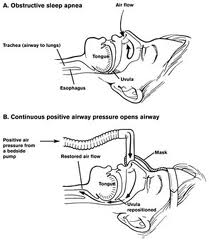The promise of shorter time to sleep, longer sleep duration, and fewer side effects associated with the experimental sleep drug suvorexant has sleep medicine clinicians and their patients eagerly anticipating the approval of the first-in-class agent.
Suvorexant’s mechanism of action in targeting the orexin system, which promotes wakefulness, sets it apart from some of the currently available sleep medications, according to Dr. Michael Thorpy, director of the Sleep-Wake Disorders Center at the Montefiore Medical Center in New York. “The effects of the new drug are fairly localized because it targets a more specific receptor than the GABA agonists, which have a more generalized effect and thus more side effects.” Importantly, suvorexant does not depress the central nervous system or respiratory function and thus may be a good option for patients with suspected sleep apnea, he noted.
Two pivotal phase III studies of the drug were presented at the meeting. Both randomized, double-blind, placebo-controlled trials were 3-month studies designed to confirm the safety and efficacy outcomes of an initial 4-week proof-of-concept study in patients with primary insomnia. Each trial evaluated two dose regimens: 40 mg for patients 18-64 years and 30 mg for those older than 65 years in the first trial; and 20 mg and 15 mg, respectively, in the second trial, explained Dr. Andrew D. Krystal, professor of psychiatry and behavioral sciences at Duke University Medical Center, Durham, N.C., and an investigator for both trials.*
Efficacy measures were patient self-reported time to sleep onset (sTSO), self-reported total sleep time (sTST), and self-reported wake after sleep onset (sWASO), as well as the polysomnographic end points of latency to onset of persistent sleep (LPS) and wake after persistent sleep onset (WASO), he said.
In the first trial, which randomized 1,021 patients, suvorexant at 40 mg and 30 mg was significantly better than placebo was in all end points at 1 and 3 months, Dr. Krystal reported. Specifically, at 3 months, the mean differences from placebo in change from baseline were an increase of 19.7 minutes for sTST, and decreases of 8.4 minutes for sTSO, 6.9 minutes for sWASO, 9.4 minutes for LPS, and 22.9 minutes for WASO.
Similarly, significant changes were observed in the second trial, with the exception of the drug’s effect on LPS at 3 months, which was not significant – a finding the investigators attributed to high placebo response, Dr. Krystal said. In this study, the mean differences from placebo in change from baseline at 3 months were an increase of 25.1 minutes for sTST and decreases of 13.2 minutes for sTSO, 8.9 minutes for sWASO, 3.6 minutes for LPS, and 29.4 minutes for WASO.
Both studies also measured the time it took patients to fall into continuous sleep and the time they spent awake during the first night of use, comparing the results with those reported before starting the drug, Dr. Krystal said. In the first trial, “patients [taking suvorexant] entered into continuous sleep 30.6 minutes faster and spent 58.0 fewer minutes awake during the night, compared to before they started taking the drug,” he said. Similarly, in the second trial, the suvorexant patients entered into continuous sleep 34.7 minutes faster and spent 63.3 fewer minutes awake during the night, compared with before they started the drug. The respective placebo group improvements in the two trials were 13.0-20.3 minutes and 19.6-21.3 minutes, he said.
Both dose regimens of suvorexant in the trials were well tolerated with no evidence of clinically important rebound or withdrawal on discontinuation, Dr. Krystal reported. “Over the 3-month period, the overall incidence of adverse events in the higher-dose groups was 25.1%, compared with 13.8% for the placebo group in the first trial, and 22.2%, compared with 16.4%, in the second, and no serious drug-related adverse events were observed in either trial with the high dose of the drug,” he said. The most common adverse events that occurred at least 5% more frequently in the high dose suvorexant group, compared with placebo, were sleepiness and headache, he noted.
There were no significant next-day objective residual effects associated with the study drug relative to placebo, as measured by the Digit Symbol Substitution Test, Dr. Krystal said. At 3 months, the incidence of next day sleepiness was about 10% in high-dose suvorexant patients and 3% among placebo patients.
While the drug was well tolerated in two short-term trials, “longer trials will be more telling,” Dr. Thorpy said. “The orexin inhibitors were first investigated because of their effect on metabolism, so there is a possibility that, in the longer-term studies, we might see weight changes or other metabolic effects.”
Although suvorexant, which has not yet been submitted to the Food and Drug Administration for approval, promises to be a valuable addition to the sleep therapy arsenal, “medications in the management of insomnia can only go so far,” Dr. Thorpy stressed. “Some of the more important therapies are behavioral. No sleep pill will work with someone who has bad sleep hygiene or sleep/wake cycle issues. For optimal efficacy, all medications should be used in combination with behavioral interventions.”
Dr. Krystal is a consultant to Merck, which funded both trials. Dr. Thorpy said that he had no relevant conflicts of interest.
* Correction, 6/21/12: An earlier version of this story implied that Dr. Andrew D. Krystal presented the results of the two trials described in the article. He was an investigator for the studies, but did not present them.
